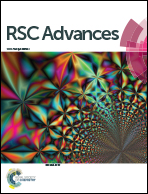Effect of different calcium salts and methods for triggering gelation on the characteristics of microencapsulated Lactobacillus plantarum LIP-1
Abstract
Probiotic Lactobacillus plantarum isolate LIP-1 was microencapsulated in milk protein matrices by means of rennet-induced gelation combined with an emulsification technique. The effect of different calcium salts (CaCO3 and CaCl2) and different methods for triggering gelation (acid-triggered versus temperature-triggered) on the characteristics of microencapsulated Lactobacillus plantarum LIP-1 were investigated. The results indicated that microcapsules prepared by CaCO3 with acid-triggered gelation showed significantly better qualities than microcapsules prepared by CaCl2 with temperature-triggered gelation. Specifically: microencapsulation efficiency (ME), particle size and size distribution (as observed by optical microscopy), the surface morphology and the microstructure (as observed by scanning electron microscopy), resistance to passage through simulated gastric fluid (SGF), release characteristic in simulated intestinal fluid (SIF) and viability during 4 weeks storage at different temperatures (4 °C, 20 °C and 37 °C) were all better in the microcapsules prepared by CaCO3 with acid-triggered gelation. For these reasons we propose that CaCO3 with acid-triggered gelation might be a better choice for crosslinking casein to form microcapsules.


 Please wait while we load your content...
Please wait while we load your content...